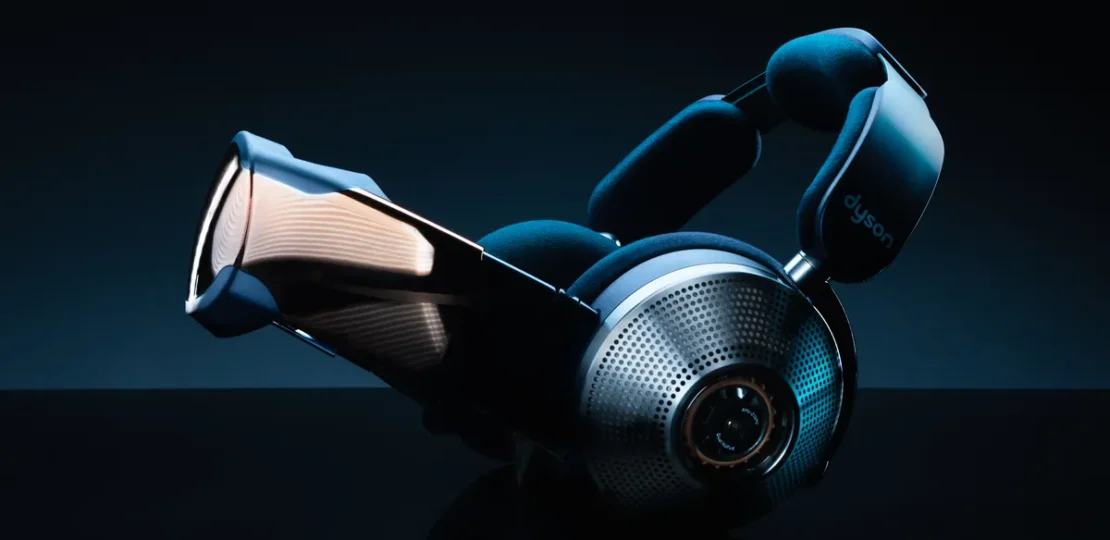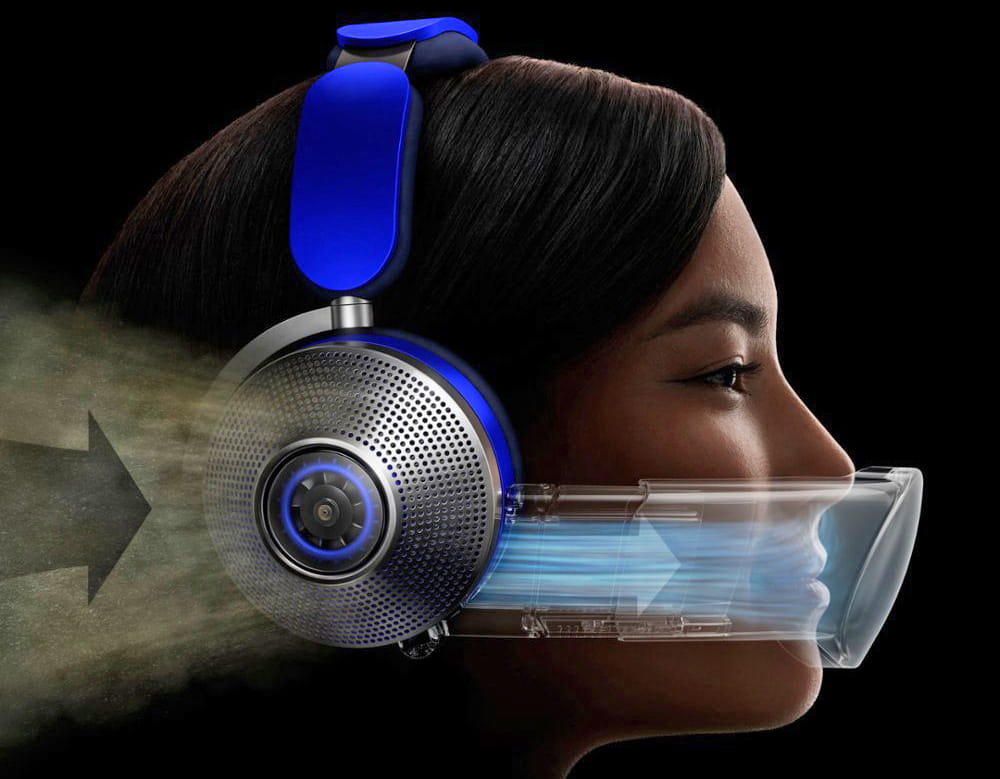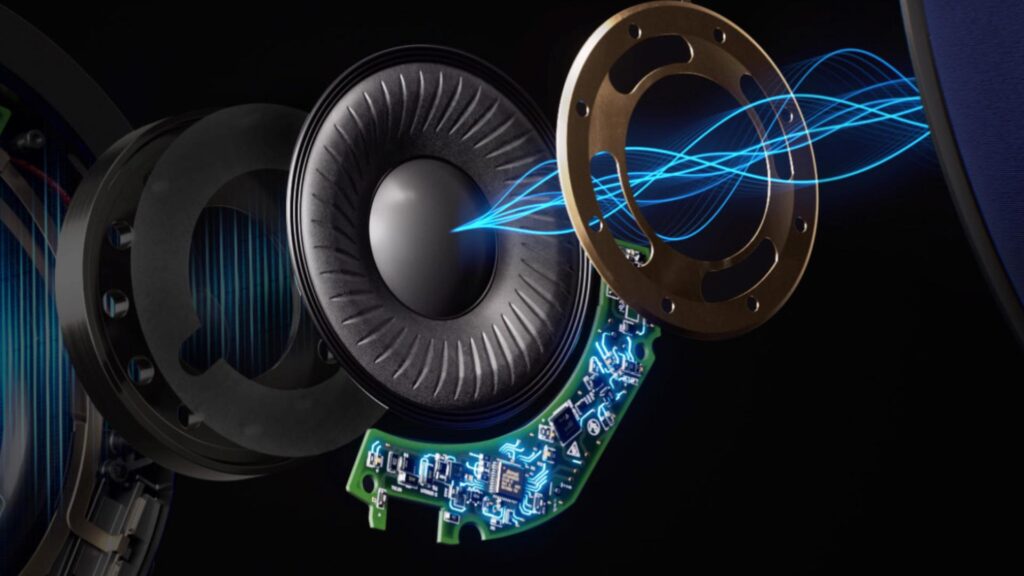Dyson Zone Headphones – The Ultimate Hybrid of Sound and Clean Air?
February 6, 2025 | by ranazsohail@gmail.com

It’s hard to believe, but yep, this is real. What I’m holding are the new Dyson Zone air-purifying headphones. That’s right, you heard me. These are real, and you can check them out.
When I first saw Dyson post about these on social media, I had to double-check the date to make sure it wasn’t April 1st. Dyson, really? A thousand-dollar pair of air-purifying headphones? I wasn’t sure whether to laugh or be confused. At first, I thought I could just ignore it. But then, one by one, videos started popping up on YouTube, Twitter, and Instagram, with people asking, “Have you seen those Dyson headphones?” “What’s going on with the Dyson Zone?”
So, here I am, realizing I just spent over a thousand bucks—plus shipping—on something I thought was probably a terrible idea in the first place. But hey, it’s my job to look into it, so here we are.
The craziest part? This product could only come from Dyson. It’s bizarre, but at the same time, it makes total sense.
Putting aside the awkward marketing campaigns they’ve run for their vacuums for a second, I have to say, I actually really love my Dyson vacuum. A lot of people I know have one too, and no one regrets it. Dyson vacuums are seriously great.
Over the years, Dyson has built up a loyal fanbase because of its incredible motors and filtration tech. They’ve earned a reputation for making some of the best vacuums in the world—and yeah, they’re also some of the most expensive. Sure, you can grab a stick vacuum off Amazon for $100, but it doesn’t take long to realize that Dyson is the brand everyone else is trying to copy.
When you succeed at one thing, you don’t just stop there, right? You build on it and branch out. So, what else does Dyson do? You’ve probably seen their bladeless fan—it’s kind of a legend by now. Think about that Dyson fan/air purifier sitting in the corner of a $500-a-night Airbnb. Sure, other companies make bladeless fans, but people want the Dyson one. The $700 Dyson one. It’s another solid example of Dyson’s expertise in motors and filtration.
Then there’s the Dyson hair dryer, which has basically become a cult classic. It’s incredible. I don’t even use a regular hair dryer—I actually use this thing to heat up dbrand skins for my phone, and it works perfectly for that, too. Once again, motors and filtration at play.
Dyson is no stranger to charging a premium for seemingly niche products. But that doesn’t mean they always get it right. You might’ve heard about their floor lamp, or maybe not—it didn’t really take off. And at $850, it’s easy to see why. Dyson does have its misses. And then, of course, there was that car prototype they showed off at CES. Yeah, they make motors, and motors are a big part of electric cars, but let’s be real—there’s a lot more to a car than just motors. Dyson cars? Not exactly an easy sell, no matter what you price them at.
So, Dyson has some hits and some misses. But what about this new product?
This one is a mix of headphones and an air purifier. Let’s start with the headphones part. And honestly, these things are wild. They’re huge. Like, really huge. A lot of the size will make sense when we talk about the filtration system and everything packed into those ear cups. But just as regular headphones, they’re massive and stick out quite a bit. Honestly, though, it’s more about the weight.

Let’s start with the Audio-Technica M50s—they’re solid headphones, but nothing too special. They weigh 288 grams, which isn’t terrible for comfort. Now, let’s talk about something heavier. We’ve discussed the AirPods Max before, which clock in at 388 grams. They definitely have a bit of weight to them. But these headphones? They’re a whole different level, coming in at a hefty 588 grams. Seriously, they feel like you’re wearing a football helmet!
Even though they’re heavy, the design uses a lot of metal, which gives them a premium feel. They try to balance the weight out with super soft ear cushions. The ear cups are plush, the top band is comfortable, and the whole look comes in this stylish purple velvet. The side pieces are designed to keep the headphones stable on your head. If you’re just sitting still—whether it’s on a chair, a train, or somewhere else—it’s not bad. But the moment you start moving around or shifting your head, you really feel the weight. It’s like wearing a helmet!
The materials are top-notch, though. The band and ear cups are both made of metal, and the cushions are super soft. You can see the microphones on the bottom, along with the USB-C port and control buttons. Speaking of controls, they’re pretty smart. Everything’s on the right ear cup, controlled by a small joystick. Instead of fiddling with a touchpad, you just tap up or down for volume, swipe left or right to skip tracks, and hold the joystick to scrub through audio. It worked with apps like Apple Music, Spotify, and my podcast app. It didn’t work in YouTube or SoundCloud, but still, being able to skip a track in Spotify or fast-forward through a podcast was a game-changer. I haven’t seen that before.
With a price tag like this, sound quality needs to be on point. These headphones come with active noise cancellation and 40mm drivers, but do they sound as premium as they cost? Not exactly. They sound more like headphones in the $200-$300 range, even though they feel like they should be worth $400. That said, the sound is solid—balanced overall, with some nice punchy bass. The ear cups give you a decent passive seal, and the active noise cancellation adds a bit more isolation. They’re Bluetooth-only, with no wired connection or any fancy lossless audio features or codecs. But overall, they deliver clear, crisp sound with a bit of brightness in the highs.
What’s really impressive is that, while the active noise cancellation is great, the transparency mode is honestly amazing. It’s the best I’ve heard from any headphones other than AirPods. You can also double-tap the right ear cup to switch between transparency and noise cancellation. The battery life lasts around 50 hours, which is top of the line for noise-canceling headphones with ANC on. And there’s no on/off switch. Instead, it uses on-head detection, like the AirPods Max. When you take them off, they go into idle mode, and when you put them back on, they play a little chime and start playing music again.
Ergonomically, they’re not anything special, but the joystick controls and the smooth switch between modes make these headphones really solid overall.
Now, onto the second part. Like I said, this is a two-in-one product—part headphones, part air purifier. Let’s set aside the “why” for a second and just focus on how it works.
The headphones come with a little plastic visor. Inside the ear cups, you can remove the outer cover and pop in the filters that come with them. These filters cover air intakes and tiny compressors that pull in outside air. The filters purify the air, removing 99% of pollutants down to 0.1 microns. That clean air is then funneled through slots and, with the visor attached magnetically, creates a seal to channel the air directly over your nose and mouth through a mesh at the front.
It’s a bit of a complex setup, but the idea is simple: if you’re dealing with noise pollution, the noise-canceling does its job. And if you’re dealing with air pollution too? Fresh, clean air on demand.
The timing of this couldn’t have been worse, because despite what you might be thinking, it has nothing to do with the pandemic or Covid. It just so happens that it was announced around the same time. The product is actually aimed at people living in or commuting through cities with bad air quality—things like dust, pollen, smog, car fumes, and grass clippings. The idea is that as you’re heading out into this polluted environment, you put on these headphones, snap on the visor, and the built-in fans will blow fresh air over your face while you’re outside. That’s the concept, anyway.
So, I went ahead and tested these out myself so you don’t have to. Yes, I probably looked a little ridiculous walking around, but I really wanted to see if they actually worked. I walked past traffic to see if I could smell gasoline fumes, through areas with landscaping to check if the pollen or grass clippings would get through, and even into a Porta-John to test how bad things could really get. Spoiler alert: I could still smell pretty much everything.
There was a nice little breeze of fresh air over my nose and mouth, but unfortunately, it didn’t block out the smells. I hit two main issues right away. The first is that when you put the headphones on, the fans in the ear cups start whirring, and the air compressors kick in, which means you can hear that noise through your music. You can turn the volume up to drown it out, but that was annoying from the start.
The second problem is that there’s no seal around your face. Sure, air flows over your nose and mouth, but it can still slip in from above or below. You can adjust the visor to make it as tight as possible, but there’s still no perfect seal. And let’s be real, no one wants to walk around breathing through a tube like a scuba diver.
So, here’s the deal: this is just a flaw that’s built into the product. Honestly, no one actually wants it this way, but that’s how it’s designed. And there are a bunch of other weird quirks too. For example, once the filtration kicks in, the battery life drops from 50 hours to just 2. The visor is super light and flimsy because it’s all plastic—probably to keep the weight down and make it easier to balance on your head. But then you get all these random scratches and poor finishes on the mesh, rubber, and plastic parts, and everything just feels cheap. And honestly, none of that even touches how ridiculous you look wearing it.
Then there’s the whole medical issue. Now, I’m not a doctor, but I have a friend who is, and Mike also has a YouTube channel you might have heard of. He explained exactly why this product is even more flawed than I initially realized.
The thing is, I’m not even sure who this product is for. They make it clear it’s not a medical-grade item—there’s no seal like you’d get with an N95 mask.
Then I look at the marketing, and it shows people in cities, on subway platforms, walking around in the streets, surrounded by pollen, smog, and other air pollutants. They put the mask on, and suddenly, the air is clean—no pollen, no smog. Is that actually possible, or am I missing something?

It claims to filter particles down to 0.1 microns, but it’s not HEPA-rated. A HEPA filter would catch particles with 99.95% efficiency, so it’s not as effective as an N95 mask, which has that tight seal. Here’s where people get confused with N95 masks: when we say N95, we mean it filters 95% of particles that are 0.3 microns in size. Some people argue that COVID particles, being around 0.1 microns, would slip through the mask, but most of the time, COVID particles are attached to bigger things like water droplets, which are larger than 0.3 microns and get caught by the mask. The reason N95s are so effective with 0.3 micron particles is because of something called Brownian motion. Tiny particles like COVID, even though they’re 0.1 microns, move randomly in the air and get trapped in the mask even more effectively than 0.3 micron particles.
There are a lot of reasons why this doesn’t make sense. I even saw a tweet that made a good point: if you’re wearing this while you have COVID, when you exhale, all that air you’re blowing out is just going into the environment instead of staying in the mask like it normally would.
This device isn’t designed to trap your breath and particles like a mask does. The company’s response is that there’s enough space to wear a mask underneath it. But honestly, if there’s room for an N95 mask, then what’s the point of this thing? The N95 mask is way better at filtering the air and sealing around your face. So why would you wear a less effective device over a better one?
What worries me is that this actually creates more risks in a couple of ways. First, it blows air directly onto your nose and mouth, which are your mucus membranes. When air circulates around them, it dries them out, and dry mucus membranes are a problem because they can crack and allow germs to enter your body. Plus, if it’s cold outside, the cold air hitting your face causes blood vessels to constrict, reducing blood flow and making it harder for your body to fight off infections.
But here’s the real kicker: The company claims it’s meant for urban environments with a lot of pollution, like car exhaust and brake dust. Sure, those are serious issues that we need to address. But according to CDC data, the death rate from chronic respiratory disease in urban areas is around 35 per 100,000 people. But you know what’s 33% higher than that? Unintentional accidents, which are at 47 per 100,000. And guess what’s contributing to more of those accidents?
Are these noise-canceling headphones and this device actually making things worse rather than helping?
So why did Dyson do this? Honestly, they’re a weird company. Like I mentioned earlier, they’re mostly known for motors and filtration, but they’ve somehow had a ton of hits. They’ve turned niche products like stick vacuums, air purifiers, and hair dryers into cult favorites, which is pretty crazy. I can see how this product came to be and how it ended up costing a thousand bucks. And honestly, the thousand-dollar price tag is probably the easiest part to understand. When you look at the materials, the cool tech, and the packaging, it actually makes sense in a way. These headphones are heavy—like, really heavy—but that’s because they’re all metal. The cups, the bands, everything. And of course, there’s a ton of tech packed inside. The packaging is insane. It’s not just the headphones and the visor (which, by the way, kind of look like a smiley face), but there’s also a super high-quality carrying case lined with felt. There’s a thick, braided strap for the case, extra filters, and the softest velvet headphone pouch I’ve ever touched. Plus, there’s a dual-color braided USB-C cable, a headphone jack adapter, a metal airplane adapter, and what looks like a reusable filter cleaner with a handle. There’s even another soft pouch just for the cables and accessories.
Then there’s the Dyson app. It connects to the headphones and lets you tweak the settings, but it also gives you real-time data on air quality in your area. It shows the noise levels around you, and how much sound the noise-canceling feature is blocking. I’ve never seen anything like that in headphones before. You can see your fan speed usage, how much noise canceling you’ve used, and even an estimate of how much life your filters have left. It even links directly to a store where you can buy new filters when you run out. If you had just shown me all of this and not told me it was from Dyson, I would think these were at least $400 headphones.
But in the end, like so much of the tech world, this all comes down to branding. Only Dyson could pull this off and get it to the point where we’re talking about it right now. There’s a business term you’ve probably heard of called the loss leader strategy.
Barbara Corcoran from Shark Tank talked to me about this on my podcast. Basically, she said that gimmicky products like this aren’t meant to make money directly. Instead, they’re designed to get attention and help sell other products. Maybe that’s what’s happening here.
They generate press.
Exactly.
There are loss leaders where companies can afford to sell hardware cheap or at a loss, because they know they’ll make it up in other ways—like through software or accessories. In this case, it’s a loss leader because no one should buy these headphones—and probably no one will—but they’re generating enough buzz that people are talking about Dyson.
Like we are right now.
Exactly! Dyson wins. We’re here talking about their ridiculous headphones with a filter, and they didn’t even need to pay for an ad. Well played, Dyson.
RELATED POSTS
View all


